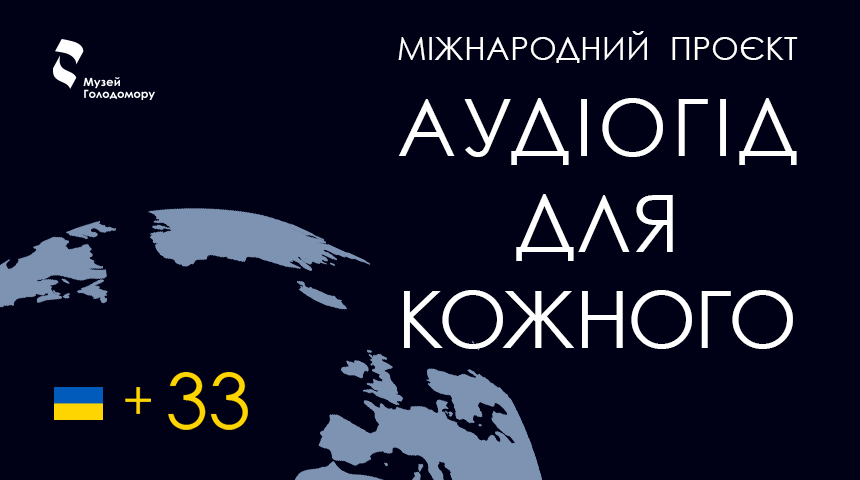Audio Excursion in 33 Languages: Visitors from All over the World Can Learn about the Holodomor
On November 24, the team of the Holodomor Museum presented the International Project “Audio Guide for Everyone”—an audio tour in 33 languages.
The scale of the project is impressive: 20 organizations and 135 people worked on the audio guides. 170 hours of audio were recorded duirng 1.5 years. The Audio Guide for Everyone project offers a tour of the museum in 33 languages, perhaps the largest language variation of any museum in the world.
The museum staff, together with volunteers, NGOs and embassies, created, translated and read the sightseeing tour and signed the exhibits.
Olesia Stasiuk, Director General of the National Museum of the Holodomor Genocide: “It is important for us, the team of the National Museum of the Holodomor Genocide, that the whole world knows about the Holodomor. That is why we have undertaken an important mission—to create an international project ‘Audio Guide for Everyone’. From now on, the museum tells the story of the Holodomor in 33 languages. This is a huge work of the whole team and another global step towards making visiting the museum comfortable and accessible to everyone.”
Ina Kniuriene, Cultural Attaché of the Embassy of the Republic of Lithuania in Ukraine: “As you know, Lithuania suffered greatly from Stalin’s repressions during the Soviet occupation. We understand the losses and pain of Ukrainians. What happened almost 100 years ago was once silenced, and even now it is difficult to understand how this could have happened. It is very important to reach a wide audience, to talk about it in different forms and in different languages. We are glad that Lithuanian will be among the 34 languages. “
Other speakers of the presentation were:
Katarina Schaupp-Karmann, First Secretary, Head of the Department of Culture, Education and National Minorities of the Embassy of the Federal Republic of Germany in Ukraine.
Serhii Kasianchuk, Director of the UWC Office in Ukraine;
Larysa Dir, Head of the Department for Ukrainians Abroad and Humanitarian Cooperation.
You can watch the full video presentation at the link.
People responded very warmly to the Holodomor Museum’s request for help with translation and recording of texts. Some volunteers, such as Stefan Luchpak from Romania, Kristian Weise from Germany and Asaf Bartov from Israel, came to Kyiv only to record the tour. Some recordings were made in professional studios abroad, and Italian and Persian audio guides were read by popular announcers Salvatore Mazza and Mahmudi Nima.
English, German, Croatian, Russian, French, Latvian, Norwegian, Italian, Polish, Czech, Arabic, Turkish, Japanese, Spanish, Portuguese, Romanian, Swedish, Lithuanian, Hebrew, Chinese (Putonghua), Swahili, Hindi, Bulgarian, Belarusian, Greek, Kazakh, Persian, Vietnamese, Hungarian, Korean, Ukrainian, Azerbaijani, Crimean Tatar—in these languages one can listen to the audio tour. You can visit the museum and use audio guides every day.
On our audio guides, you can listen to a long tour lasting about 40 minutes, a short one—20 minutes, as well as captions to the exhibits.
Video broadcast of the event.
